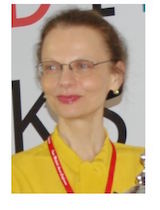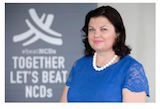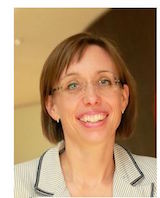Curriculums must include social determinants of health, say Téa E Collins, Svetlana Akselrod, Julia Tainijoki-Seyer and Ayodele Akinnawo
Non-communicable diseases (NCDs) such as cardiovascular diseases, cancers, chronic respiratory diseases, and diabetes are on the rise in poor and rich countries alike. These four main groups of NCDs are responsible for 41 million deaths worldwide, with 78% of deaths from NCDs occurring in low and middle income countries (LMICs). [1]
NCDs are preventable, and many preventive activities target the modifiable behavioural risk factors of NCDs, such as poor diets, smoking prevalence, harmful use of alcohol, and a lack of physical activity. Not enough attention is given to the social determinants of health. [2] Most of these determinants, such as poor early life experiences, education, income, and working life and environmental conditions, have a negative influence on people’s health and length of life and contribute to the increasing burden of NCDs worldwide. [3]
There are a number of actions and strategies which are beyond the remit of health systems that can be implemented to influence the social determinants of NCDs. [4] There is also more that could be done to explore the role of social determinants within the health sector itself to tackle NCDs, particularly in terms of making sure that physicians’ training is fit for purpose.
The common approach to medical education has a disease focus and narrow contextual understanding. Traditional curriculums are not designed to demonstrate the links between living conditions and diseases, and treatment is often emphasised over disease prevention. LMICs are experiencing rapid demographic and epidemiological transitions and need a healthcare workforce that is able to respond to the current global health challenges in clinical settings. We propose that medical education needs to change to prepare future physicians. A “transformative” medical curriculum needs to explore the convergence of public health and medicine by taking a holistic view of a patient, as well as incorporating population level attributes. It should be context specific and integrate teachings of global health, social determinants, and medical science with increased interest in underserved communities. [5]
Physicians need to be trained to incorporate the social determinants of health into their clinical practice by combining a biomedical education with an approach that builds critical thinking through interprofessional, cross-sectoral, experiential learning opportunities throughout the curriculum and future professional development. [6]
Collaborative education is a cornerstone of transformative learning. The importance of interprofessional teamwork in healthcare systems is increasingly recognised as a means to achieving higher quality care and improving the effectiveness and efficiency of services. [7] Moreover, enhanced collaboration among healthcare professionals with complementary skill sets is prerequisite to improving coordination and continuity of care for chronic NCDs. However, medical education systems often remain ill equipped to train students in interprofessional teamwork. Evidence indicates that most education systems limit the development of positive relationships among students of different professions, thus restricting their understanding of and respect for others’ roles and perpetuating non-collaborative practices. [8]
It is also important for physicians to foster dynamic, close working partnerships with people outside the health system, such as policy makers, educators, and community organisations, as there are key to addressing social determinants. Collaboration between health and non-health professionals can be supported by effective leadership, a shared vision, strong relationships among partners, and efficient structures and processes to do the work of collaboration. [9]
Increased advocacy towards the inclusion of social determinants of health in medical courses would help to create the needed policy change. Collaboration between ministries of education and ministries of health will be essential to transform medical education. These changes should be introduced according to regional, national, and institutional needs and consider the culture, teaching traditions, disease burden, healthcare delivery models, and availability of resources.
Additionally, using their dual capacity as health experts and trusted members of society, physicians are particularly well positioned to act as proponents for individuals, communities, and the healthcare profession. Acting in their own capacity, or through their affiliation with professional bodies such as medical associations, they are able to put pressure on governments to implement policies that will reduce health inequalities.
It will take time to change the practice of healthcare to make disease prevention a part of clinical care. We need to recognise the multiple determinants of health, improve access to healthcare for those with unmet needs, build interdisciplinary and interprofessional partnerships, and advocate for public policies that promote the health of all communities. Changing medical education to a “transformative” model is a step in the right direction.
 Téa E. Collins is an Adviser for the WHO Global Coordination Mechanism on the Prevention and Control of Noncommunicable Diseases (GCM/NCD), Geneva, Switzerland
Téa E. Collins is an Adviser for the WHO Global Coordination Mechanism on the Prevention and Control of Noncommunicable Diseases (GCM/NCD), Geneva, Switzerland
 Svetlana Akselrod is the Assistant Director General, Noncommunicable Diseases and Mental Health, WHO, Geneva, Switzerland
Svetlana Akselrod is the Assistant Director General, Noncommunicable Diseases and Mental Health, WHO, Geneva, Switzerland
 Julia Tainijoki-Seyer is a Medical Adviser for the World Medical Association, Ferney-Voltaire, France
Julia Tainijoki-Seyer is a Medical Adviser for the World Medical Association, Ferney-Voltaire, France
 Ayodele Akinnawo is a Consultant for the WHO Global Coordination Mechanism on the Prevention and Control of Noncommunicable Diseases (GCM/NCD), Geneva, Switzerland
Ayodele Akinnawo is a Consultant for the WHO Global Coordination Mechanism on the Prevention and Control of Noncommunicable Diseases (GCM/NCD), Geneva, Switzerland
Competing interests: None declared.
This article is part of a series proposed by the WHO Global Coordination Mechanism on NCDs and commissioned by The BMJ, which peer reviewed, edited, and made the decisions to publish. Open access fees are funded by the Swiss Agency for Development and Cooperation, International Federation of Pharmaceutical Manufacturers and Associations (IFPMA), UNOPS Defeat-NCD Partnership, Government of the Russian Federation, and WHO.
References:
1 WHO. Global health estimates 2016: deaths by cause, age, sex, by country and by region, 2000-2016. World Health Organisation, 2018.
2 World Health Organization Commission on Social Determinants of Health. Closing the gap in a generation: health equity through action on the social determinants of health: final report of the Commission on Social Determinants of Health. WHO, 2008.
3 Donkin A, Goldblatt P, Allen J, Nathanson V, Marmot M. Global action on the social determinants of health. BMJ Glob Health 2017;3(Suppl 1):e000603. PubMed doi:10.1136/bmjgh-2017-000603
4 Allen M, Allen J, Hogarth S, Marmot M. Working for health equity: the role of health professionals. UCL Institute of Health Equity, 2013 doi:10.12968/johv.2013.1.5.256.
5 World Health Organization. Gaps and recommendations on ‘Transformative Health Personnel Education. 2014. https://www.who.int/workforcealliance/media/news/2014/TWG2_TransformativeEducation.pdf
6 National Academies of Sciences, Engineering, and Medicine. A framework for educating health professionals to address the social determinants of health. National Academies Press, 2016.
7 Mayo AT, Woolley AW. Teamwork in health care: maximizing collective intelligence via inclusive collaboration and open communication. AMA J Ethics 2016;18:933–40. PubMed doi:10.1001/journalofethics.2016.18.9.stas2-1609
8 Hall P. Interprofessional teamwork: professional cultures as barriers. J Interprof Care 2005;19(Suppl 1):188–96. PubMed doi:10.1080/13561820500081745
9 Danaher A. Reducing health inequities: enablers and barriers to inter-sectoral collaboration. Wellesley Institute, 2011. https://www.who.int/news-room/fact-sheets/detail/noncommunicable-diseases.
